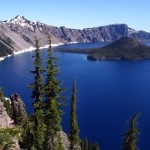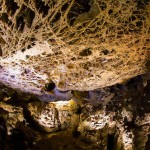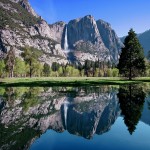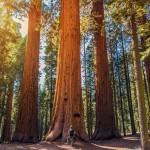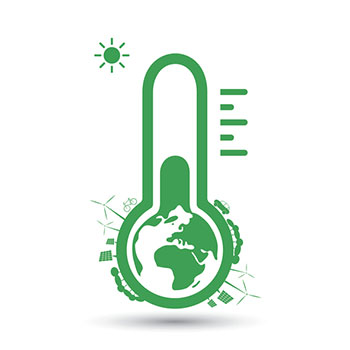The first call came in to a local 911 center around 8:49 a.m. on October 16th, 1991. A small blaze in an open field near Spokane International Airport… relatively easy to control on most days for fire crews in the area, their skills honed after a long summer of similar incidents.
But something was different on that day. A strong cold front, the first of the season, was dropping down out of the Arctic, a phenomena known to the locals as an Alberta Clipper after the Canadian province from which direction they come.
Up to that point, the fall had been warm and unseasonably dry. Humidity was low and although the fire season was wrapping up, the old hands were nervous… 41 days had passed without any precipitation.
A small city with 182,000 inhabitants, Spokane was ringed with wildlife conservation areas, a playground for outdoor recreation from fly fishing to hunting to bird watching. The parks and conservation areas around the periphery of the city, including those near the airport, were tinder dry.
The wind caught the flames and spat them across the land like the inside of a blast forge. The airport fire spread quickly; new ones, sparked by accident or downed power lines, started up across four counties. By 11 a.m., dispatchers were sending at a new alarm every sixty seconds. Before the day was out, 3,000 calls would come in.
Across the city, visibility dropped to zero as smoke streamed through the streets. Crews couldn’t even see the fires they were dispatched to fight. The wind made the rest unapproachable. Plate glass windows blew out and billboards exploded as winds passed 60 m.p.h.
For the forestry technicians on the front lines of the conflagration that became known as Firestorm ’91, though, it was just another day at the office.
They were called in from around the region and battled nearly 100 separate fires for the next week. One civilian was killed and more than 100 homes were lost. But hundreds more were saved, and thousands of acres of environmentally sensitive wilderness were protected thanks to these firefighters.
Feeling the Heat as a Forestry Technician in Fire Suppression
The dry, technical language on their contracts reads “Forestry Technician (Fire).” But on the job, they are never called by that title. They may be called hotshots or hand crew or smokejumpers or rappellers or hold other titles for a dozen other specialized roles.
Some forestry technicians stay on year-round, helping to prepare equipment and organize for the coming fire season. Others work in fuels management, planning and executing controlled burns to lower danger levels. And some focus on outreach and education, managing the increasingly common and dangerous wildland/urban interface, where suburban homes encroach into fields and forests ripe for conflagration.
But most forestry technicians are seasonal employees who spend their summers with a hose, saw, or shovel in hand, hiking up steep, smokey mountainsides and carving fire line by hand… 12 to 36 inches wide, down to mineral soil, at a relentless pace of 18 chains (a little over 1100 feet) per hour.
A Variety of Roles are Available for Wildland Fire Fighters
This work tends to be consistent for all line crews, whether they arrive by parachute, helicopter, vehicle, or foot.
There are a broad variety of specialties among forestry technicians in fire suppression including:
- Hand crew - Member of a 18 or 20 person unit that performs the grunt work of line construction and fire suppression.
- Engine crew - Working on a wildland fire engine, with between 2 and 4 crew members, pumping water to reinforce line or put out spot fires. Also frequently work as first responders to wildfire calls.
- Hotshots - Experienced and specialized crews of 20 persons who perform extended attack in rough terrain.
- Smokejumpers - Small teams of parachute-qualified firefighters who are deployed to battle remote fires in difficult terrain from the air.
- Helitack - Helicopter-based crews of firefighters who either work on initial attack of remote fires or work in support of other crews on larger blazes.
- Dispatcher - Dispatchers primarily work in logistics, determining resource requirements and arranging orders for manpower and equipment for fire incidents.
- Lookout - Lookouts sometimes still live in remote towers and pinpoint fires by eye, but more commonly now serve as airborne spotters or satellite monitors to locate new fires.
These roles exist regardless of agency and are reinforced by the unique operational structure of wildland fire response. Since a series of conflagrations in the 1970s, stakeholders from all major agencies engaged in wildland fire protection have come together in an interagency working group called the National Wildfire Coordinating Group (NWCG) to develop consistent standards for training, communication, equipment, and tactics for all U.S. wildland firefighters.
Every forestry technician, whether working for a private contractor, the federal government, or a state or tribal department carries an Incident Qualification Card characterizing their training and abilities. Popularly known as a red card, everyone at a fire camp, from the incident commander down to the HR specialist, must carry an IQC stating their qualifications for their role.
Work Conditions
Sheer, physical labor is the cornerstone of the job. To contain everything from torching trees to blazing fields of grass, a fire line free of all flammable material is scraped out around the perimeter. In some terrain, bulldozers can do most of the work; in others, fire engines can douse it to enhance the effectiveness.
But in most cases, building a line comes down to a relay of fit young people cutting down trees, digging through loam, and hacking back brush to create a dead zone that the fire can’t jump.
A favorite refrain for squad bosses is “asses and elbows,” meaning that all they want to see for the next twelve hours is a crew bent over shovels, Pulaskis, axes, and McLeods, digging line.
It’s punishing, unforgiving outdoor exertion in all climates. Working a fire in the Rockies in the fall can easily see a crew starting off in beating sun and waking up to two inches of snow the next morning.
Although the NWCG sets minimum fitness standards for red card holders, almost every firefighter exceeds those by a considerable margin. It’s a point of pride to not have the worst numbers on a crew. When the time comes to pack out your own bodyweight in gear from a spike camp in a high mountain valley, you’ll appreciate physical fitness in a whole new way.
Because wildfires often occur in remote settings, it’s common to combine camping with firefighting. Firefighters might be out for up to 21 days (14 is more common), working 16-hour shifts. At the end of that, you might simply shuffle back to a shared tent and crash in your sleeping bag for a couple hours sleep.
And because fires tend to lie down at night, when humidity increases and winds die down, a lot of work is done after dark, by headlamp, when crews can safely get close to the line.
On The Job Wherever Wildfire Is Found
Forestry technicians find themselves working fire lines throughout all the lower 48 states and Alaska (and, on occasion, Canada or Mexico as international incidents receive support). Federal and state agencies both employ technicians as first responders at local wildlife refuges and conservation areas. When not on a fire, they often work as local labor on projects such as:
- Trail maintenance
- Preventive burns
- Facilities maintenance
Most of these posts are in rural or even remote locations. Housing is sometimes provided, or seasonal accommodations may be available in nearby small towns.
Because of the way the national incident command system (overseen by the National Interagency Fire Center in Boise) works, crews from almost any agency may find themselves dispatched to any other, regardless of location. If an Alaskan wildfire on BLM (Bureau of Land Management) lands is getting out of control, the Navajo Hotshot crew from the Bureau of Indian Affairs may be on a plane from New Mexico that same afternoon.
This is truer for federal agency employees but even state employees find themselves working across state lines as the 11 Geographic Area Coordination Centers responsible for the U.S. shuffle resources around during big fire years.
Recently, the large federal agencies with wildland fire responsibilities have even consolidated their hiring efforts. The Department of the Interior handles hiring for the Forest Service, Bureau of Land Management, Fish and Wildlife Service, and National Park Service.
In dry, heavily forested Western states such as Montana, Washington, and California—where the most and biggest fires burn—wildland fire response on public lands is usually handled by a separate agency (such as the California Department of Forestry, Washington State Department of Natural Resources, and Montana Department of Natural Resources and Conservation) instead of the state fish and wildlife service.
In the Midwest, South, and East, smaller plats of land under state management and lower fire danger generally see fish and wildlife services combined with forestry or natural resource agencies with their own fire crews, such as for the Minnesota Department of Natural Resources.
People who have been bit by the fire bug tend to think of their career less in terms of the agency that employs them than the position they fill. It’s common for professional firefighters to shift around between Forest Service, Bureau of Land Management, Fish and Wildlife Service, and various state agencies a number of times through their career as they take on roles of progressive responsibility in the wildland fire field.
Education, Experience, and Training Requirements
Most forestry technicians do not require any special education beyond the training they will be given when hired on as firefighters. In fact, many forestry technicians start on the job while they are still college students, and the degree they may be working toward often has nothing to do with forestry.
Experience is also not required, but it is greatly preferred. For most positions, a separate eligibility list will be established for applicants with previous wildland fire experience. On some crews, such as hot shot and helitack, there are qualification standards that require the crew be composed of primarily veteran firefighters—80 percent of a hot shot team, for example.
One type of education that is almost always welcome in the wildland firefighting community is medical. Almost all crews appreciate having multiple qualified emergency medical technicians (EMTs) on the team.
Training
Training is a different matter. All personnel who can expect to be deployed onto the fire lines must meet certain minimum training qualifications irrespective of their agency. These are taught in a class series called S-130/S-190, which includes:
- ICS-100 Introduction to Incident Command System
- L-180 Human Factors in the Wildland Fire Service
- S-130 Firefighter Training
- S-190 Introduction to Wildland Fire Behavior
Successful passage of S-130/S-190 will earn you your red card as a lowly Firefighter 2.
For many forestry technicians, that may be as far as they go. Three or four summers on a hand or engine crew will see them through college.
For others, fire becomes a way of life, and they will continue to earn qualifications and rise to some of the highest levels of the combined command structures in the wildland fire service.






